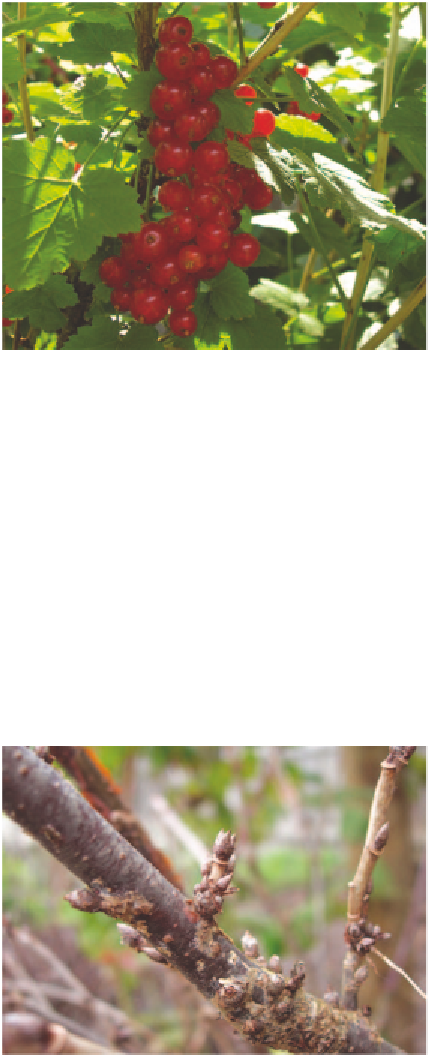Agriculture Reference
In-Depth Information
winds. They can be grown as standards,
espaliers or as an open vase bush on a short
30 to 40 cm trunk with a base of three to four
branches (see page 130). Even if they are a
bush, the basic principles are the same.
Standard-shaped bushes can be grafted onto
a flowering currant that will form the stem,
and will need a sturdy stake for support.
Fruitingwood
Red and white currants fruit from two- to
three-year-old spurs in much the same way as
apples and pears (see Figure 10.4).
Figure 10.3
Who needs rubies when you have red
currants!
These spurs are long lived and so a
permanent structure of branches can be
developed. A neat bush or espalier shows off
the beauty of these jewel-like fruit (see
Figure 10.3).
cultivars will ensure the best fruit. Currants
need to be netted or grown in a berry cage if
you are to pick any crop; birds love currants.
Pruningtime
In the early stages of establishment, winter
pruning will promote vigorous branches to
provide a basic framework. The fruiting wood
real or proposed should be pruned in
summer. Prune the new side growths to about
15 cm as the fruit is ripening and then
shorten them back again to about two buds in
winter.
Redandwhitecurrants
Ribessativa,
R.rubrum
These medium-sized bushes to 1.5 m have
brittle wood so plant them away from strong
Maintenance
The summer and winter pruning should
remove about half the annual growth, some
spur thinning may be needed and bush
trained currants can benefit from the
removal of a branch every four to five years.
As with all fruiting plants, keep the centre of
the bush open, and always remove any dead,
diseased, crossing or crowded growth.
Figure 10.4
Red and white currants fruit from long-lived
spurs.

